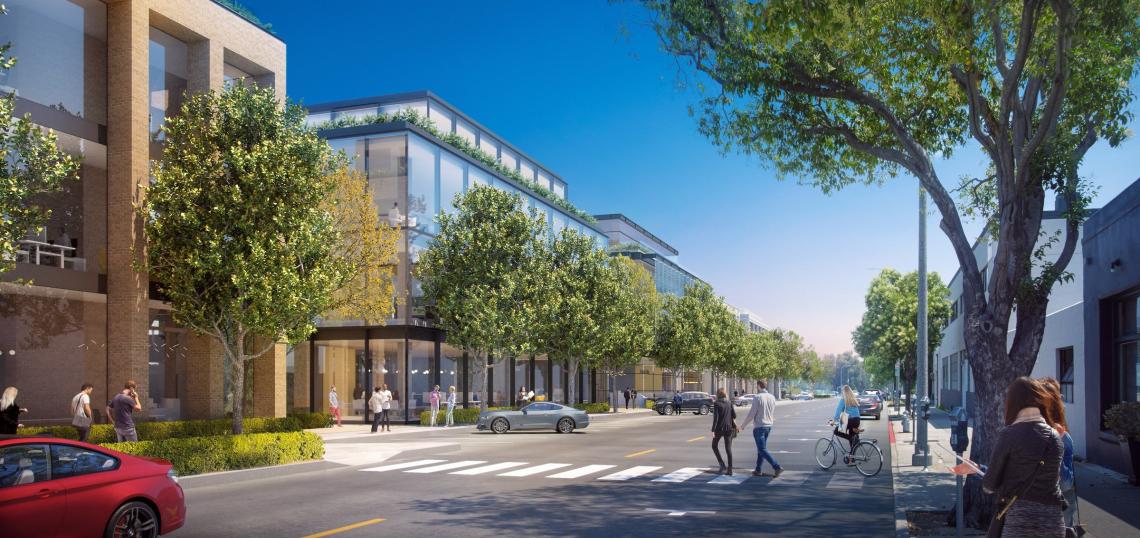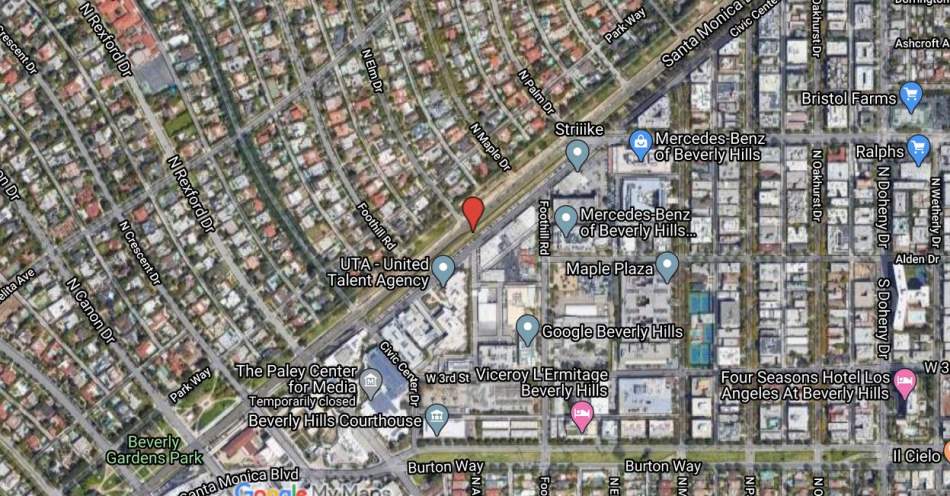The owners of a narrow strip of land on the outskirts of the Beverly Hills Golden Triangle are pitching plans to develop the property with commercial offices.
The property, formerly a railroad right-of-way, spans more than a quarter of a mile on the south side of Santa Monica Boulevard between Civic Center Drive and Beverly Boulevard. Entitlements now under consideration by Beverly Hills officials call for the construction of 11 separate buildings containing a combined total of nearly 114,000 square feet of office space above basement parking for 476 vehicles.
Designed by Gensler, the three- and four-story buildings would feature a mix of architectural styles. Traditional "European" style buildings would bookend the linear site, with a series of contemporary structure sitting between.
Landscape architecture studio Hocker has been tapped to design the open spaces and greenery which would divide the different buildings.
The project's developer, Beverly Hills Land Company, has been controlled since 2014 by investors Lyn Konheim, Stanley Black and Bob Barth. Their project would require several discretionary entitlements, including a general plan amendment and a specific plan amendment.
The Beverly Press reports that a community meeting to solicit feedback for the project was held on July 13, in which a representative of the project indicated that construction would begin no earlier than 2022.
Not included in the proposed development is a second strip of undeveloped land between Beverly Boulevard and Doheny Drive, which the project owners have proposed to convey to the City of Beverly Hills for public use.
Both properties were formerly owned by the Union Pacific Railroad, whose operations resulted in arsenic contamination. The developers would be required to conduct remediation activities before building on the land.
The office site was also previously home to nearly 200 trees, which were removed by the current land owners between 2015 and 2016, prompting the Beverly Hills City Council to launch an investigation of the decision.
- Beverly Hills (Urbanize LA)









